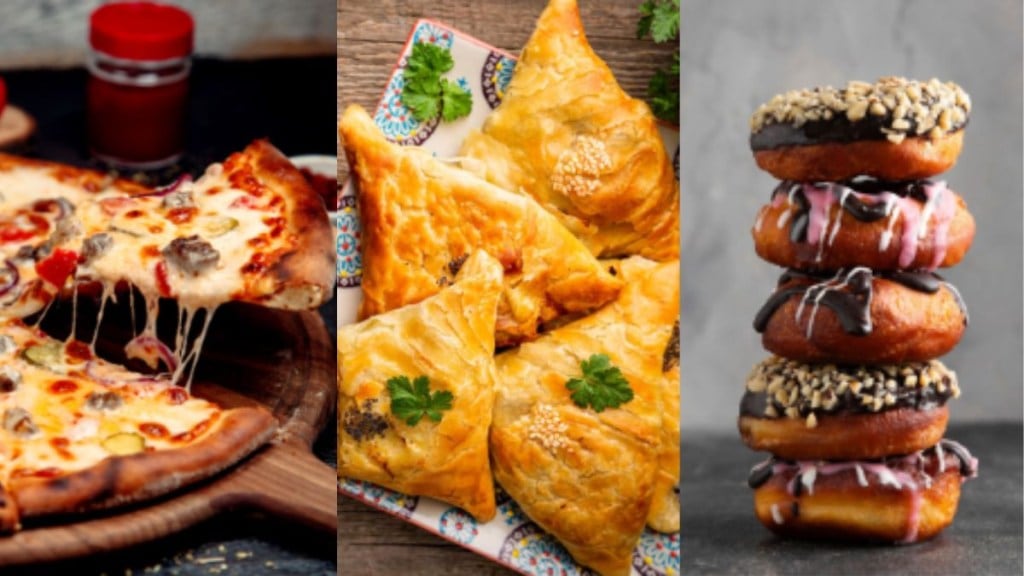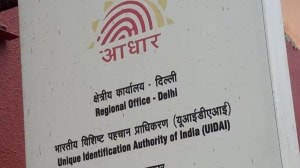Stressed? Order your favourite pizza. Had a good day? It’s time to order and celebrate with your favourite meal. No matter what happens, our mind just thinks about treating yourself with your favourite meal. Eating junk, unhealthy snacks is more like a way of comforting ourselves. From binge watching your favourite series with pizza and coke or having that typical Sunday breakfast with samosas, pakoras and jalebis, these snacks hold a special place in our lives, even if they’re not always the healthiest. Hence, with rising cases of obesity, diabetes, and heart problems, experts warn that it may be time to look closely at what we’re eating, whether Indian street food or Western fast food.
So, which snack is more harmful? Jalebi or doughnut, samosa or pizza? We spoke to a dietician to find out.
Pizza: A cheese and calorie bomb
Pizza may look harmless, but just two slices can give you 500–600 calories. That’s because of the refined flour base, cheese, and processed meat. “Pizza is full of salt, fat, and calories. Eating it too often can raise your blood pressure and cholesterol,” says Bhakti Samant, Chief Dietician at Kokilaben Dhirubhai Ambani Hospital, Mumbai.
Burger with fries on the side
One cheesy burger is enough to make your day better, but it has around 450–550 calories. If you add fries or a sugary drink, the calorie count goes even higher.
“These fast foods are not just heavy, they also make you crave more because of all the added fat and salt,” says Samant.
Aloo bhajiya (Pakoras)
Aloo bhajiya or pakoras are tasty, but a medium portion can have 400–500 calories, mostly from oil. “Street vendors often reuse the same oil, which creates harmful chemicals like acrylamide and trans fats,” explains Samant.
Doughnuts
Doughnuts may be sweet, but they’re also loaded with sugar and refined flour, packing 300–400 calories per piece. “These sweets raise your blood sugar very quickly, which can lead to insulin problems over time,” says Samant.
Ice Cream
One scoop of ice cream can range from 150 to 250 calories. Add toppings, and the count goes up fast. “Regularly eating sugary desserts can put a strain on your metabolism and increase the risk of diabetes,” warns Samant.
Samosa
A single samosa has about 250–300 calories. But we often eat more than one. “These snacks have a high glycaemic load, which means they spike your blood sugar quickly,” explains Samant.
Jalebi
One piece of jalebi can add another 150–200 calories to your plate, with almost no nutrition. “A samosa and jalebi together can equal a full meal’s calories, with no protein, fibre, or vitamins,” says Samant.
Vada pav and bread pakora
These popular snacks contain 300–400 calories, depending on size and stuffing. Like pakoras, they’re often fried in reused oil. “Even if they taste good, regularly eating them can increase cholesterol and belly fat,” Samant says.
So, which snack is the unhealthiest of all?
“There’s no single bad snack,” says Samant. “It’s about how often you eat them, how they’re cooked, and what your overall lifestyle looks like,” she added.
Occasional indulgence is okay. But eating fried or sugary snacks regularly, especially made with bad quality oil or refined ingredients, can harm your health in the long run.
How to enjoy unhealthy snacks without harming your health?
Instead of blaming one snack, focus on portion control and healthier versions. “You can try air-fried pakoras, whole-wheat pizzas, or sweets with less sugar,” suggests Samant. “It’s not about giving up your favourite foods, it’s about how you prepare and eat them,” she added.








